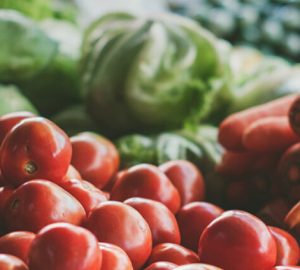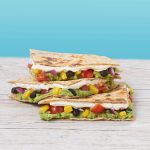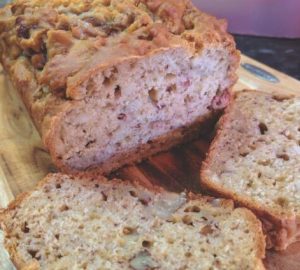The anatomy of a sports drink
During intense exercise, there are two major factors that will result in a reduction in performance: the depletion of the body’s limited carbohydrate stores; and dehydration.
Sports drinks can provide a convenient way of replacing both the fluid lost and providing an alternative fuel to be used during exercise, sparing your vital internal stores. Also, vigilant fuelling and hydration during exertion can play a vital role in recovery as your carbohydrate stores will need less topping up afterwards.
Carbohydrate-based sports drinks have often got a bad name. If your goal is to lose weight and you are only exercising for short periods of less than an hour, then a carbohydrate-based sports drinks will have a negative effect on you reaching your goals. On the other hand, athletes looking to maximise their performance stand to significantly benefit from them.
Energy depletion
Carbohydrate is the main fuel used by the body when exercising at high intensity. When sustaining a high-level effort for a long period, you can empty your body’s stores of carbohydrate in as little as 60 minutes. Swimming upwards of 5km at high intensity, without taking on any additional fuel, is likely to lead to running out of carbohydrate – resulting in a catastrophic drop in performance.
Carbohydrate is the major ingredient found in energy drinks. There are a whole host of different formulations available, some of which are better than others. A common practice with Channel swimmers is to use maltodextrin mixed with water or cordial. Maltodextrin is the fastest absorbing carbohydrate available, allowing an uptake of 60 grams of carbohydrate per hour. It is tasteless and has a very low osmolality (we’ll come onto that later) making it easy to drink and light on the stomach. Carbohydrates such as glucose and sucrose offer similar rates of carbohydrate delivery, so functionally are very similar, although will taste sweeter.
The consumption of fruit sugar (fructose) on its own is best avoided as it can cause stomach problems. Although fructose is technically a sugar, it has a very low Glycaemic index, so causes a very slow rise in blood sugar – the opposite of what an athlete requires when fuelling intense exercise.
The optimum strategy is to combine maltodextrin with fructose at a 2:1 ratio (60 grams of maltodextrin with 30 grams of fructose per litre of water) as this has been shown to allow for the fastest absorption of carbohydrate possible, taking the ceiling from 60 grams with plain maltodextrin to 90 grams with the combination of two sources. This dual supply also assists with fluid delivery and is lighter on the stomach and less likely to cause stomach problems.
Dehydration
Dehydration is also a major cause of fatigue. If you lose more than 2% of your body weight through sweat then there will be a negative effect to performance. The hotter the conditions, the greater the decrease in performance. A drink will obviously provide fluid, which will offset losses and help prevent a drop in performance.
Electrolytes – Electrolytes help ensure fluid balance within the body, assisting with the absorption of water and with maintaining hydration. They are also responsible for the transmission of neural signals within the muscles and have been suggested to help prevent cramps. The most important electrolyte that needs replacing during and post exercise is sodium. Sodium also helps to stimulate the sensation to drink, which in hot conditions can help ensure fluid is replaced.
Electrolyte-only drinks – So called zero-calorie sports drinks typically only contain electrolytes with a flavour and chemical sweetener. The genuine application of these products is very minimal as, typically, if you are exercising hard enough or for long enough to need to replace electrolytes then you will also benefit from carbohydrate, so it would be better to use a carbohydrate/electrolyte energy drink.
Drinks with added protein – Protein makes a poor fuel source during exercise, has little performance benefit and potentially can cause stomach upset, so unless you are completing ultra distance (upwards of 6-8 hours) low intensity swims, protein is best avoided during exercise.
Caffeine – Caffeine is a very effective ergogenic aid which can improve performance. In drinks it is important to know which of your drinks contain caffeine or you could easily end up taking too much without realising. We suggest taking a caffeine source separately in a gel and leave your drinks free from it.
Tonicity – Tonicity refers to the concentration (osmolality) of a drink relative to the blood. Whether a drink is isotonic, hypotonic or hypertonic is an important factor to consider when choosing a drink.
Isotonic – This refers to a carbohydrate drink that has been mixed to have a very similar concentration to the blood. This is commonly used in energy drinks as it results in the optimal absorption of both carbohydrates and fluids.
Hypotonic – Refers to a drink that is of a weaker concentration than the blood. This allows for the optimal absorption of fluid, but this comes at the expense of carbohydrate delivery. These types of solutions are best used when sweat rates are very high.
Hypertonic – Refers to a drink that has a concentration that is higher than the body. This delivers greater amounts of energy, but slows the digestion of the solution, as in order to absorb it your body must first drag water into the gut. These solutions are best avoided in hot conditions or when dehydrated as they can result in stomach problems, but in cooler conditions these offer a good way to provide fuel. We often recommend using an isotonic drink in these conditions and if you find yourself drinking infrequently, use an energy gel periodically. This in essence mixes with the drink in the gut to create a hypertonic solution.
As a general rule a drink with a 0-5% carbohydrate content is hypotonic, 6% (i.e. 60 grams carbohydrate per 100ml water) is isotonic and upwards of 7% is hypertonic.
Palatability – A drink could provide the most amazing array of performance-enhancing ingredients, but if you can’t consume it comfortably during exercise then it is useless. The first rule of sports nutrition is ‘you’ve got to want to consume it’. Flavour, sweetness, and temperature all play a role. Strong flavours can often quickly lead to flavour fatigue, and a loss of interest to drink, so typically a milder flavour is better, particularly for longer events where a large volume of drink is consumed. Drinks that are cooler also tend to be preferable during exercise and result in greater fluid intakes. Ultimately though, palatability will come down to you finding a drink that you are able to use comfortably during training and competition.
As always, with any strategy it is important to try the drink during training before you use it during competition.







